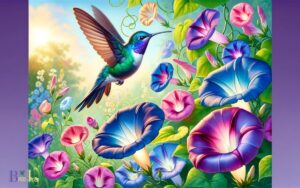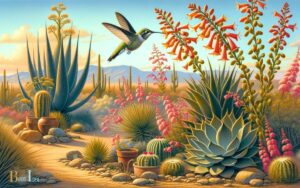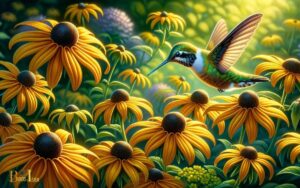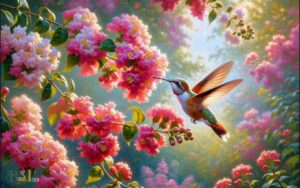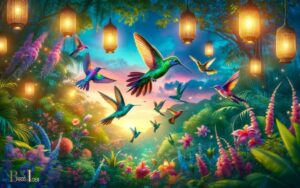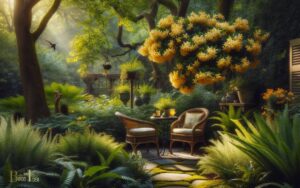Flowering Trees That Attract Hummingbirds: Discover!
Flowering trees that attract hummingbirds are prized not only for their beauty but also for their role in supporting local ecosystems.
Some of the most popular trees that hummingbirds frequent include the Coral Honeysuckle, Trumpet Creeper, and Red Buckeye.
These species boast vibrant, tubular flowers rich with nectar, making them ideal for these tiny birds.
Planting such trees in your garden can create a lively and colorful atmosphere while providing a natural haven for hummingbirds.
Hummingbirds are attracted to certain flowering trees due to the shape, color, and nectar content of their blossoms.
Most hummingbird-friendly trees have:
- Tubular flowers: The shape is perfect for the long, slender beaks of hummingbirds.
- Bright colors: Red, purple, pink, and orange hues are particularly appealing to them.
- High nectar production: Ample nectar is essential to meet the hummingbirds’ high energy needs.
For example:
Create a hummingbird paradise in your backyard by planting trees like the Red Buckeye and Coral Honeysuckle, which offer abundant nectar and vivid blooms.
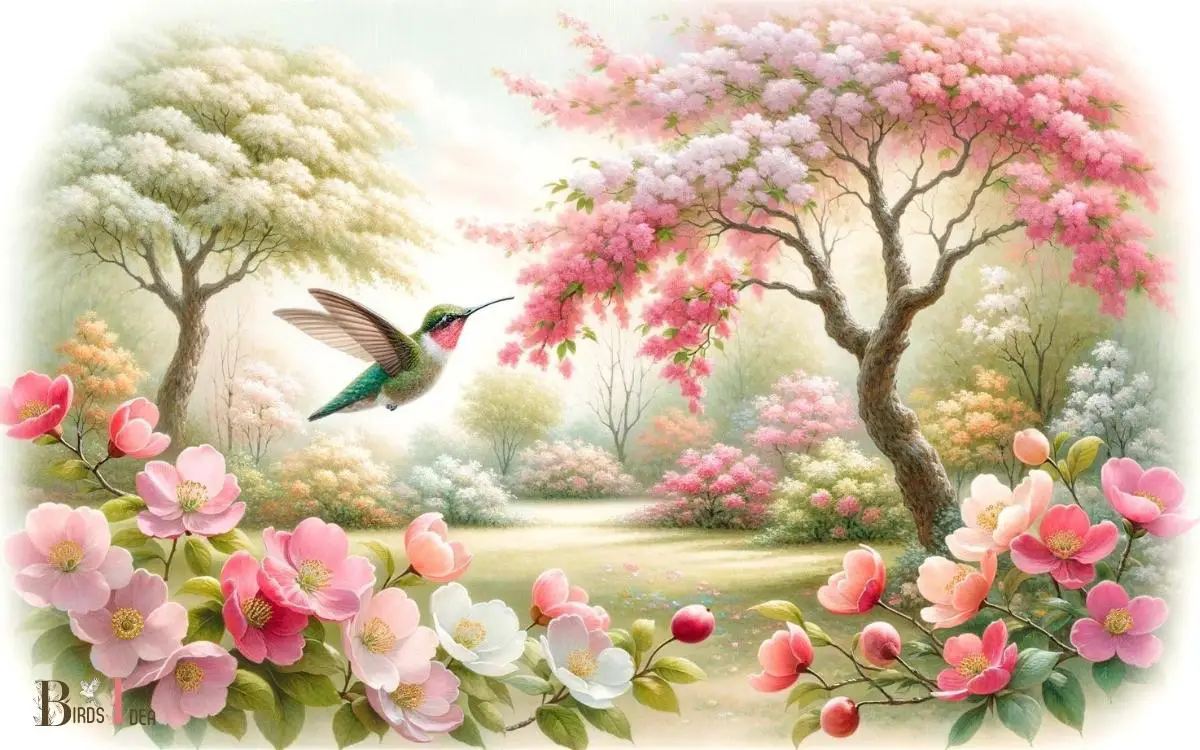
Key Takeaway
Sun-loving Flowers for Hummingbirds
Sun-loving flowers provide a vibrant and enticing environment for hummingbirds to feed and thrive.
These flowers, such as bee balm, salvia, and butterfly bush, not only add beauty to a garden but also attract hummingbirds with their nectar-rich blooms.
Their bright and showy petals act as a visual beacon for these tiny, energetic birds. Sun-loving flowers are generally easy to care for, requiring minimal maintenance once established.
They thrive in sunny locations, making them a perfect addition to any garden or outdoor space.
Their ability to attract hummingbirds without necessarily attracting bees makes them a popular choice for many gardeners.
Understanding the specific needs and preferences of hummingbirds can help in selecting the most suitable sun-loving flowers to create a welcoming habitat for these delightful creatures.
Shade-tolerant Blooms for Hummingbirds
Shade-tolerant flowers offer an alternative option for attracting hummingbirds without drawing in bees.
These blooms thrive in low-light conditions, making them perfect for shaded gardens or areas with dappled sunlight.
Here are some shade-tolerant flowers that can attract hummingbirds:
| Flower | Light Requirements | Bloom Color |
|---|---|---|
| Fuchsia | Partial shade | Various shades |
| Coral Bells | Partial to full shade | Red, pink, white |
| Bleeding Heart | Full to part shade | Pink, white |
These shade-tolerant blooms provide a beautiful and bee-free way to attract hummingbirds to a shaded garden.
By incorporating these flowers, individuals can create a welcoming environment for hummingbirds while enjoying the beauty of their garden even in low-light areas.
Native Plants for Hummingbird Attraction
The article now shifts the focus from shade-tolerant blooms to native plants that attract hummingbirds.
When selecting native plants to attract hummingbirds, it’s important to consider the specific species of hummingbirds in the region.
For example, in North America, native plants like trumpet vine (Campsis radicans), bee balm (Monarda didyma), and cardinal flower (Lobelia cardinalis) are known to attract hummingbirds with their vibrant flowers and nectar.
These plants are well-suited to the local climate and provide a natural food source for hummingbirds.
By choosing native plants, gardeners can create a welcoming environment for these fascinating birds while also supporting the local ecosystem.
Native plants often require less maintenance and are more resistant to pests and diseases, making them a sustainable choice for hummingbird gardens.
Container Garden Flowers for Hummingbirds
When selecting container garden flowers for hummingbirds, it’s important to consider the specific needs of the local hummingbird species and provide a variety of nectar-rich blooms.
Some excellent choices for container gardens include petunias, fuchsias, and salvias, which are all known for their ability to attract hummingbirds.
These flowers are not only beautiful but also provide the high-energy nectar that hummingbirds need to thrive.
When planting in containers, it’s important to ensure that the pots have good drainage and are placed in locations that receive adequate sunlight.
Additionally, incorporating a mix of tubular and bell-shaped flowers can help accommodate different hummingbird species.
By creating a diverse and nectar-rich environment, gardeners can attract and support local hummingbird populations in their container gardens.
Low-maintenance Flowers for Hummingbirds
To ensure a low-maintenance container garden that continues to attract hummingbirds, gardeners should select flowers with long blooming periods and minimal care requirements.
Some low-maintenance flowers that are attractive to hummingbirds include bee balm, salvia, and trumpet vine.
- Bee balm, also known as Monarda, is a hardy perennial that blooms from mid-summer to early fall, requiring little maintenance once established.
- Salvia, available in a variety of colors, is another long-blooming option that is drought-tolerant and attracts hummingbirds with its tubular flowers.
- Trumpet vine, with its vibrant orange or red flowers, is a vigorous grower that thrives in various soil types and requires minimal care.
These low-maintenance flowers not only provide a beautiful and inviting environment for hummingbirds but also make gardening easier for enthusiasts.
Conclusion
There are plenty of flowers that can attract hummingbirds without also drawing in pesky bees. By planting sun-loving, shade-tolerant, native, and container garden flowers, one can create a colorful and vibrant oasis for these delightful little birds.
With low-maintenance blooms that provide nectar and beauty, it’s like creating a buzzing metropolis for hummingbirds, without the hassle of bee traffic jams. Happy gardening!

